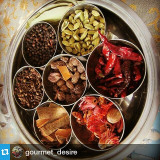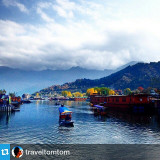Random image from our India photo collection

Tamil Nadu Tourist Centers
Ooty
There is something special about Ooty. The lush vegetation and the lavender-blue sheen of the mountains offer a promise of a summer of peace.
All along the hill slopes in the Nilgiri Mountains, you will find that omnipresent, glossy, stout bush with fragrant white or pink flowers and a melodious name camellia (Camellia thea).
Tea, brought to the Nilgiris in the 1860s, is amongst India’s most prominent plantation crops, with the country being the world’s largest producer, consumer and exporter of black tea.
This is perhaps why the slopes of the Nilgiris, all round Ooty, Coonoor and the like, seem to have tea bushes almost like a second skin.
Processed tender leaves and leaf buds compose the tea of commerce. This agro-industry flourishes on the hillsides of the Nilgiris and experts say that tea growing at a higher elevation would have a flavor superior to that growing at lower heights.
This flavor and distinctive character of the popular beverage is from essential oils and alkaloids present in the plant. But then, all this is after a long manufacturing process that is carried out in industrial units on the plantation itself or nearby.
From harvesting to curing, rolling and fermentation, to drying and grading, the process is delicate and tedious. There are minor variations depending on the kind of tea being produced. The delicacy of the job of picking ‘two leaves and a bud’ is perhaps testified by the fact that the pickers are always women or children.
And so, it is the camellia bushes, with their sheen and gloss that green the Blue Mountains, providing raw material for a huge industry and employment for many in the land of the Strobilanthes.
Go back
All along the hill slopes in the Nilgiri Mountains, you will find that omnipresent, glossy, stout bush with fragrant white or pink flowers and a melodious name camellia (Camellia thea).
Tea, brought to the Nilgiris in the 1860s, is amongst India’s most prominent plantation crops, with the country being the world’s largest producer, consumer and exporter of black tea.
This is perhaps why the slopes of the Nilgiris, all round Ooty, Coonoor and the like, seem to have tea bushes almost like a second skin.
Processed tender leaves and leaf buds compose the tea of commerce. This agro-industry flourishes on the hillsides of the Nilgiris and experts say that tea growing at a higher elevation would have a flavor superior to that growing at lower heights.
This flavor and distinctive character of the popular beverage is from essential oils and alkaloids present in the plant. But then, all this is after a long manufacturing process that is carried out in industrial units on the plantation itself or nearby.
From harvesting to curing, rolling and fermentation, to drying and grading, the process is delicate and tedious. There are minor variations depending on the kind of tea being produced. The delicacy of the job of picking ‘two leaves and a bud’ is perhaps testified by the fact that the pickers are always women or children.
And so, it is the camellia bushes, with their sheen and gloss that green the Blue Mountains, providing raw material for a huge industry and employment for many in the land of the Strobilanthes.
Go back









